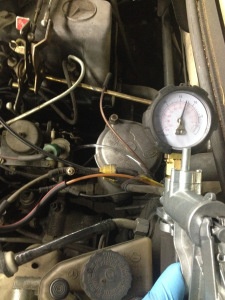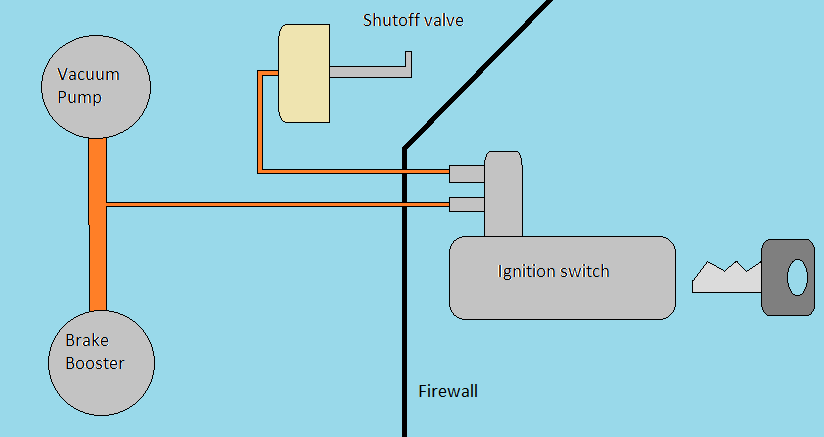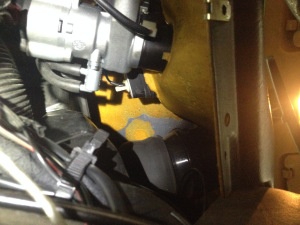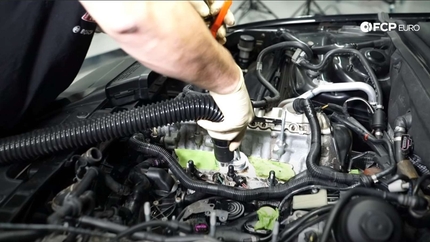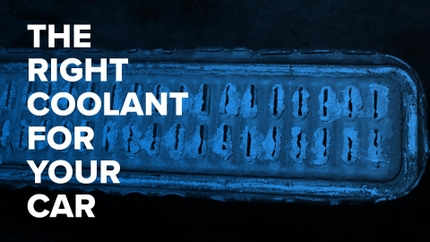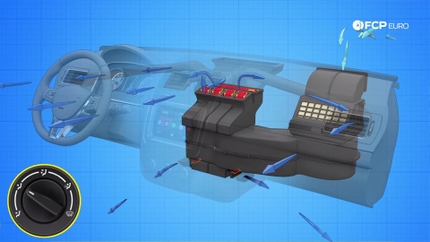- 06/17/2015
- 1 Min Read
- By: Greg Duffield
Why Won’t My Mercedes Diesel Shut Off? (W123, W116, W126)
Have you ever pulled up to a valet drive in your Mercedes Benz only to have the engine continue to run? Did you go through the further embarrassment of popping your hood to shut it off and then explain to the porter how to do this? I have. And I won’t do it again. Older Mercedes diesels are known to be tough as nails but quirky at the same time. They have a shutoff system that utilizes vacuum which will usually give you warning signs of failure before it does. In this case, I will be discussing vehicles equipped with the OM616 and OM617 engines.
Pressing the large STOP lever on the engine
This particular diesel is a 1982 Mercedes 240D; a low-powered, simple car that will outlive cockroaches. My friend began noticing that his car would continue to run for several seconds after pulling the key out. The engine would slowly and uncomfortably come to a halt. Occasionally, it would not shut off at all and he resorted to popping the hood and pressing the large, red STOP lever on the engine. I had a look and systematically checked the condition of his entire system to be sure I had a complete diagnosis.
To start off, let me highly recommend a hand-held vacuum tester which includes a hand pump and gauge. The tool I am using is a Mityvac. This is a must-have tool, especially for older cars which use vacuum systems extensively. It can be used for checking vacuum diaphragms, circuit integrity, and actuation.
I started by checking the part that has bitten me before, the injection pump shutoff valve. I applied vacuum to it with the engine running. It abruptly stopped and continued to hold vacuum. This part is ok for now. The inability to hold vacuum and/or quickly shut down the engine indicates a fault. Next, I checked how much vacuum was actually being applied to the valve when I turned the key. It was low, about 6 inches of vacuum. A leak existed somewhere. I had to find it.
I removed the underdash panel to expose the vacuum switch attached to the steering lock/ignition switch. I removed the output line and applied vacuum with the engine running. I killed the engine quickly and it held vacuum. This leg of the system was ok. I checked the steering lock vacuum valve itself by pinching off one side and applying vacuum. It held until I cycled the key. The valve is ok.
While I was under the dash, I checked the vacuum supply. It was low, about 6 inches. Here is where my problem lied. I wiggled the lines and rubber hoses where it tees in from the main brake booster feed. I quickly lost my vacuum. The rubber hoses were to blame… they were cracking and loose. Somebody had replaced them with fuel injector leak line hose at some point. I replaced the 2 lines and found that the engine will shut off quickly and reliably.
This is an excellent lesson in the value of diagnosis. Had I followed my knee-jerk and replaced the injection pump shutoff valve, I would have wasted a fair bit of money and time with an unfixed car. I fixed this car for $0. I had a few inches of vacuum hose hanging out in the tool box. The beauty of these older cars with vacuum systems lies in their fixability and simple diagnosis.

